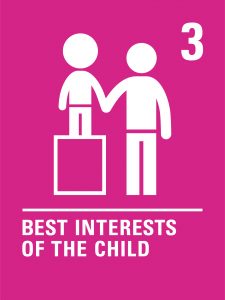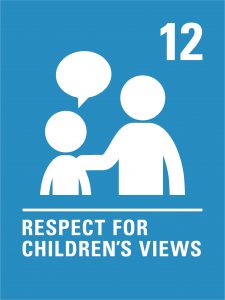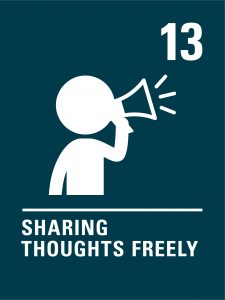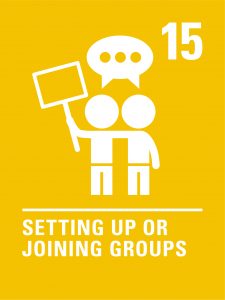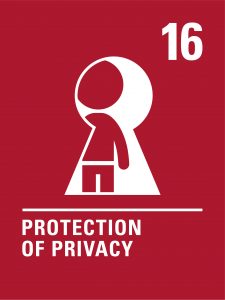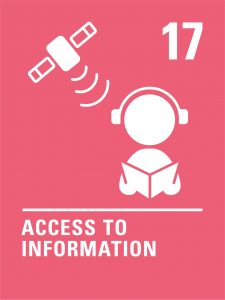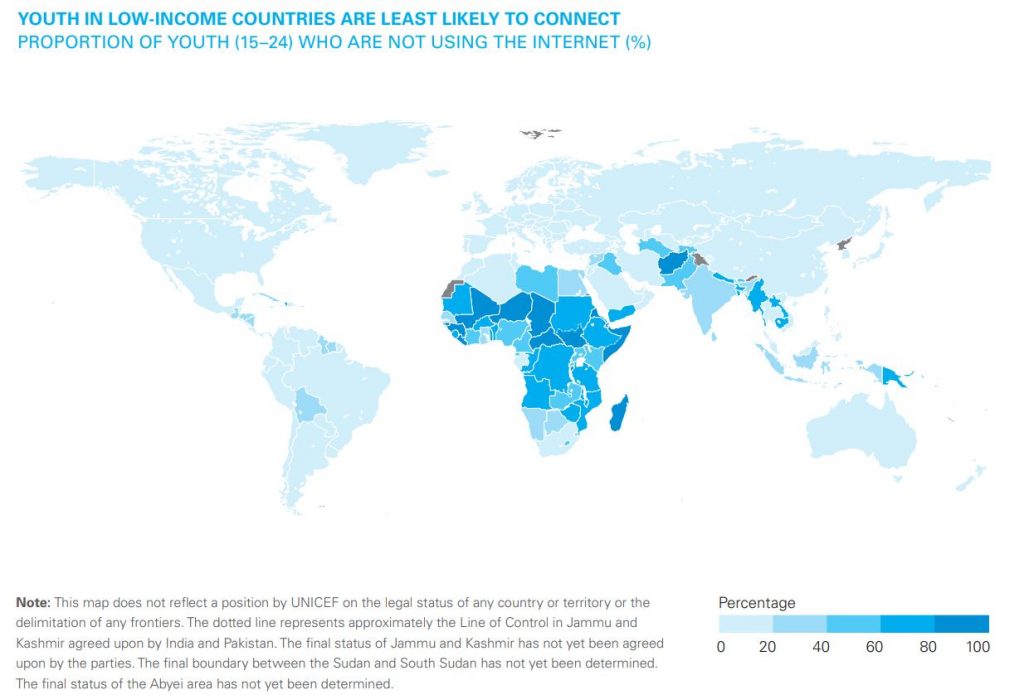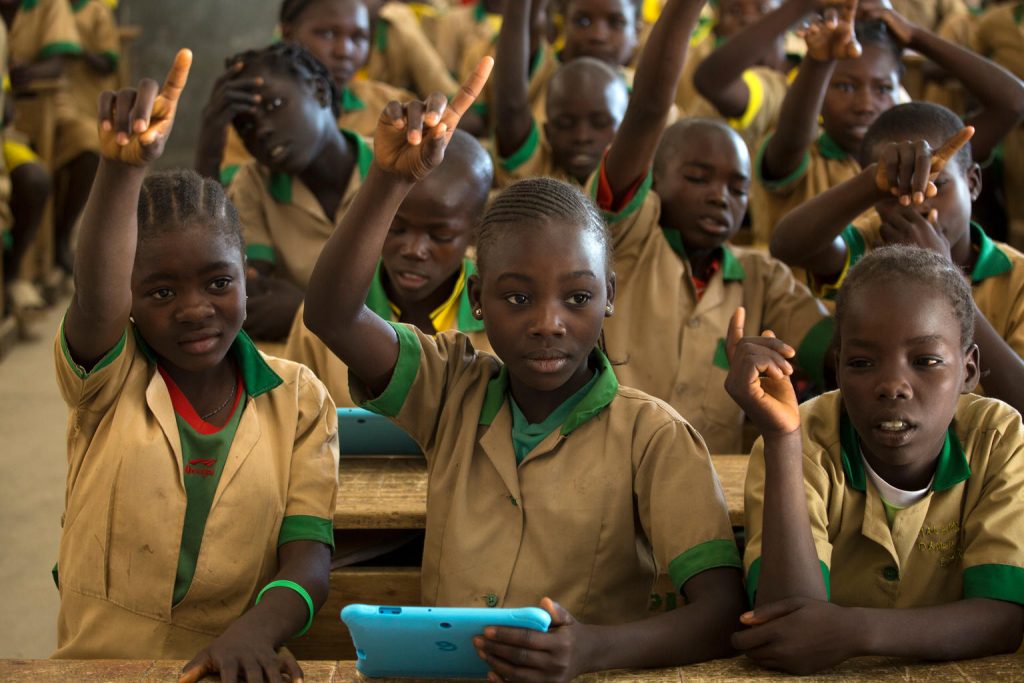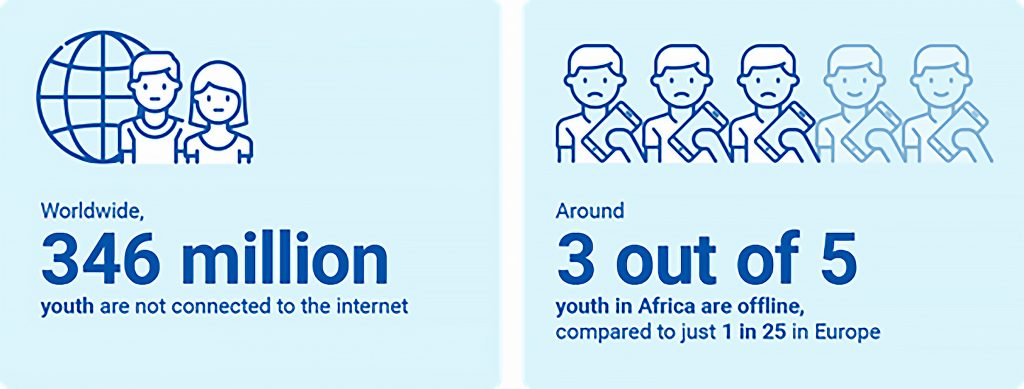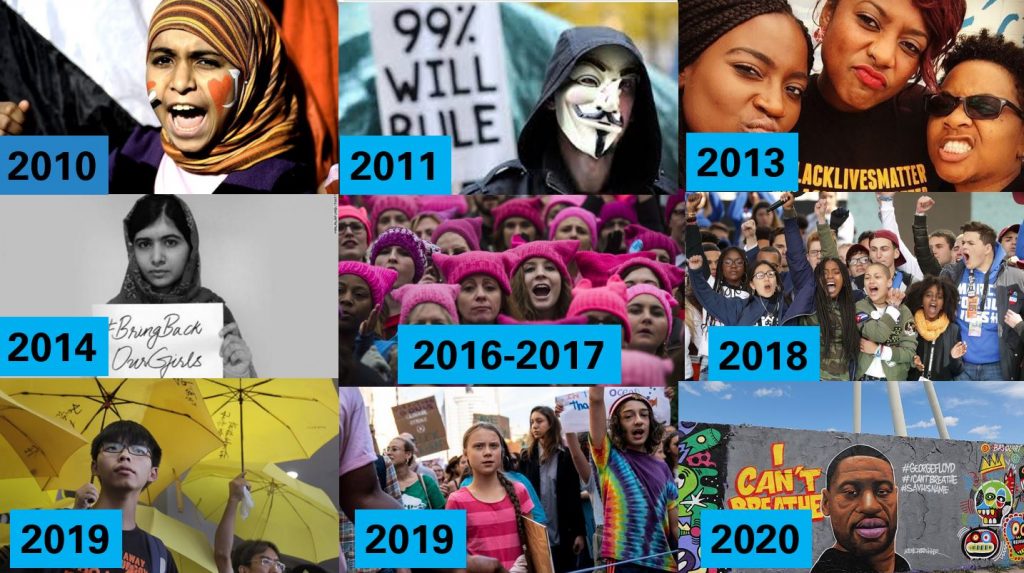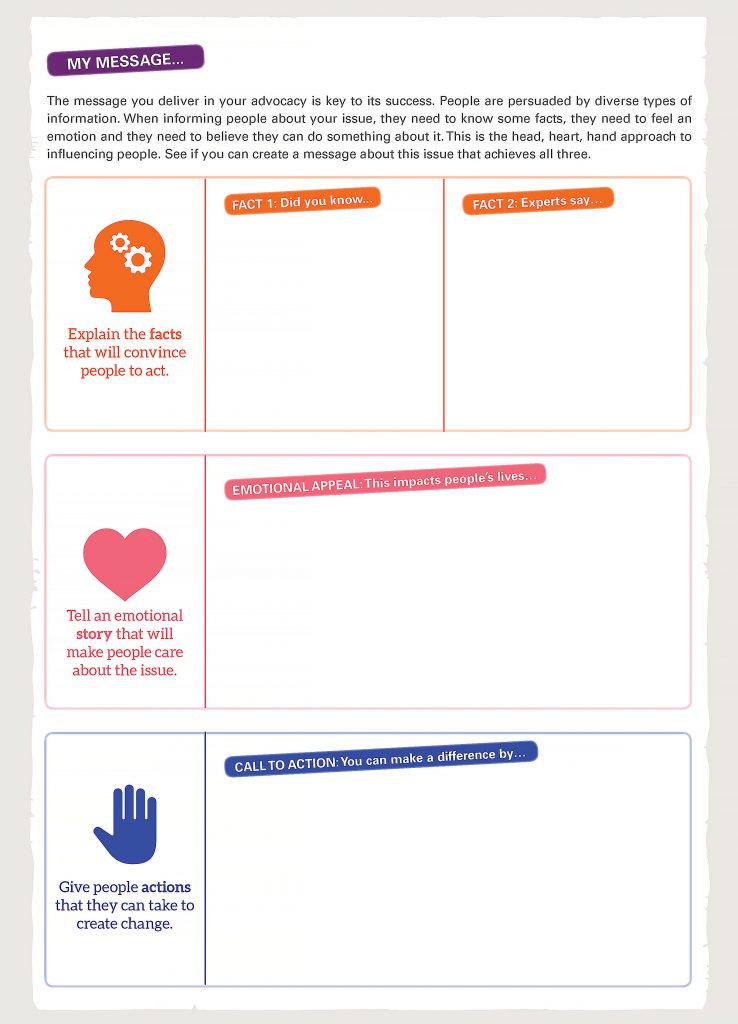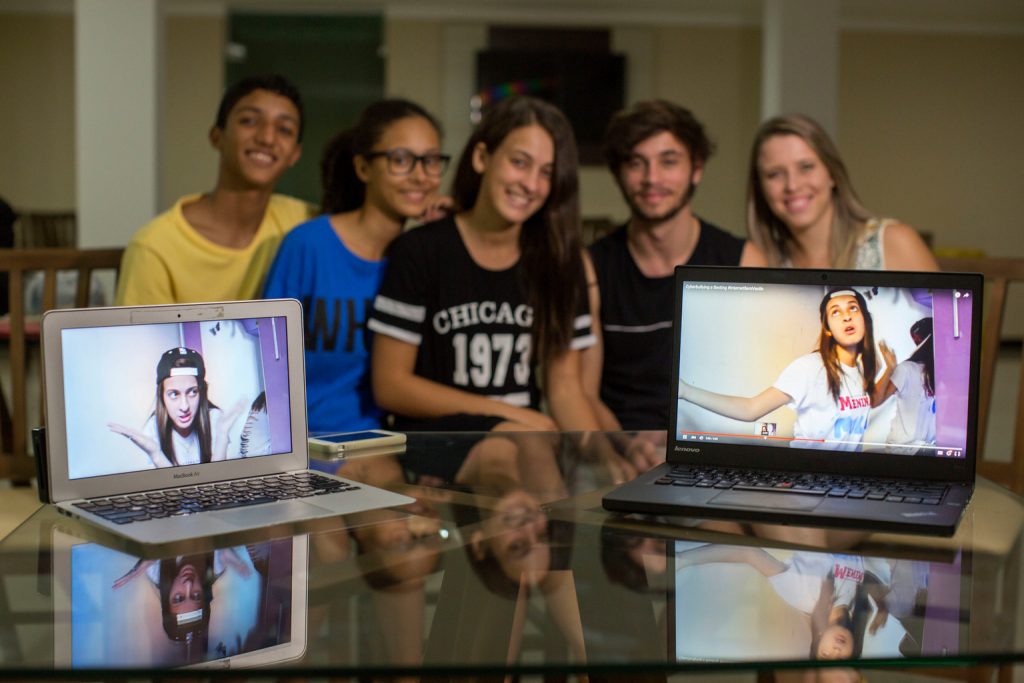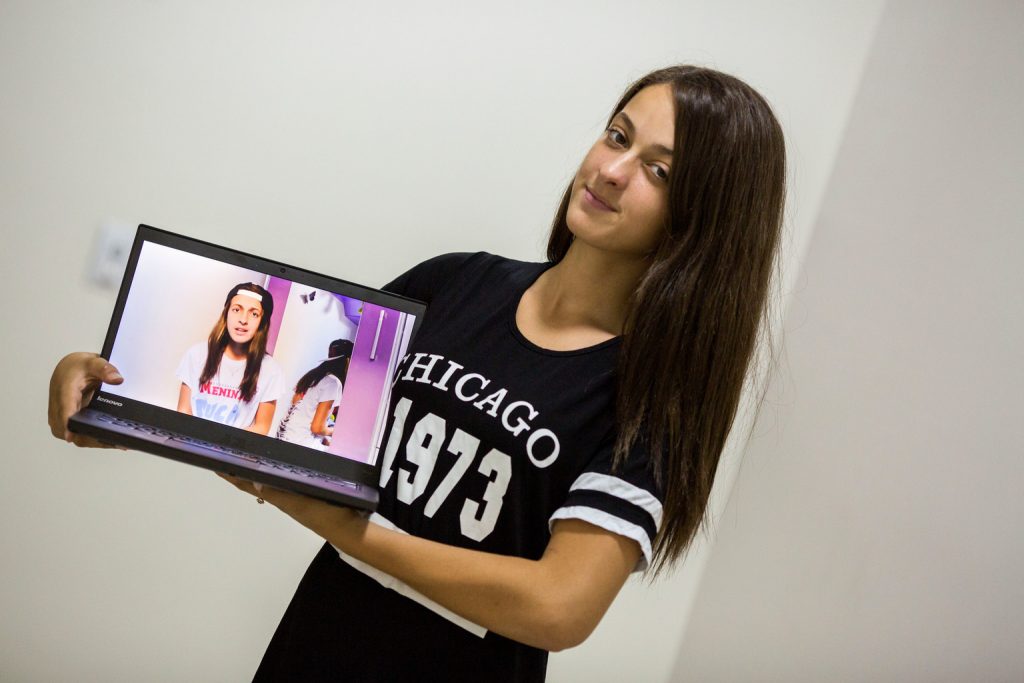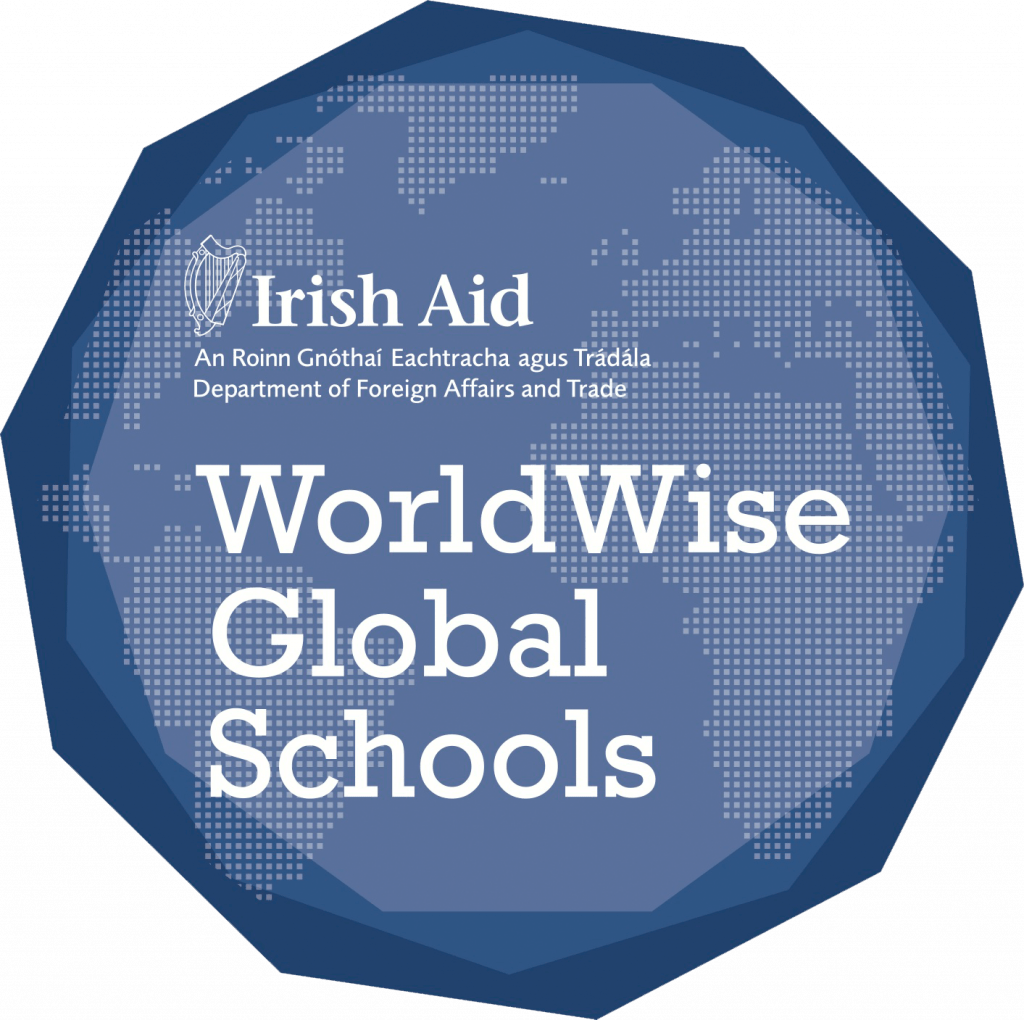Online activism for a better world
DIGITAL ACTIVISM AND CITIZENSHIP The digital age has taken over the way we communicate, debate, interact and protest. The online world has become a powerful resource for youth activism, enabling the sharing of knowledge, amplifying of messages and organising large scale actions. Learn more about digital citizenship and activism and the ways in which the internet can be used to realise children’s rights and change the world for the better.
Workshop Activities
| Activity 1 | Online Rights of the Child | 30 Mins |
| Activity 2 | Digital Agency | 30 Mins |
| Activity 3 | Digital Influencers | 20 Mins |
| Activity 4 | Digital Skills | 20 Mins |
| Activity 5 | Global Digital Divides | 40 Mins |
| Activity 6 | Digital Citizenship & Activism | 40 Mins |
Learning Objectives
- Identify and assess their digital skills for online activism
- Define and describe digital citizenship
- Formulate online actions for activism
Curriculum Connections
JUNIOR CYCLE
Statements of Learning
SOL 6: The student has an awareness of personal values and an understanding of the process of moral decision-making.
SOL 7: The student values what it means to be an active citizen, with rights and responsibilities in local and wider contexts.
SOL 9: The student understands the origin and impacts of social, economic, and environmental aspects of the world around her/him.
SOL 11: The student takes action to safeguard and promote her/his wellbeing and that of others.
SOL 23: Brings an idea from conception to realisation.
JC WELLBEING – This programme works on achieving the following Well-being indicators.
Responsible – I take action to protect and promote my wellbeing and that of others
Connected – I feel connected to my school, my friends, my community and the wider world. I appreciate that my actions and interactions impact on my own wellbeing and that of others, in local and global contexts.
Respected – I feel that I am listened to and valued. I have positive relationships with my friends, my peers and my teachers. I show care and respect for others.
CSPE Strand 1- 1.1, 1.3, 1.5, 1.8, 1.9, 1.10, 1.11; Strand 2- 2.1, 2.5, 2.9, 2.10.
English Strand 1, 1.1, 1.2, 1.4, 1.5.
Geography Strand 3- 3.2.
RE Strand 3 – 3.1, 3.2, 3.5.
SPHE Strand 1 – 1.2, 1.8, 1.9; Strand 2 – 2.3; Strand 3- 3.3.
TRANSITION YEAR
SENIOR CYCLE
POLITICS & SOCIETY , Strand 2- Topic 3- 3.2, 3.3, 3.4; Topic 4.1, 4.2, 4.3, 4.4.
Strand 3- Topic 5.1, 5.2, 5.3, 5.4; Topic 6- 6.1, 6.2, 6.3.
Strand 4 – Topic 7.4.
Resources
Teaching Notes
A third of adolescents aged between 12 and 18 years spend more than
hours online per day.
Activity 1 – Online Rights of the Child
Duration: 30 Mins
The aim of this activity is to explore young people’s online rights through the Convention on the Rights of the Child
The Convention on the Rights of the Child was a document written in 1989, long before social media and the wide use of the internet. These rights, however, apply in all situations including online and it is the duty of governments and adults to ensure rights are upheld.
In regard to the rights online, there are several key rights: the right to access the information (Articles 13 and 17), to participate (Article 12), to join groups online (Article 15), the right to privacy (article 16) and the right to be protected from online violence or abuse (Article 19). It is the responsibility of governments, parents, schools and other institutions to protect your rights.
Activity: Create an imaginary line in the room and place A4 sheets of paper with the following ages 6, 8, 10, 12, 13, 14, 15, 16, 17, 18. Ask participants to line up behind the age they feel is the right age for the following statements. Once they have made their decision ask them if they would like to change having reflected on the new information.
- Article 12 Decision making: At what age should children be allowed to go online?
- Would you change your mind if you found your child upset by something they saw online?
- Article 13 Sharing thoughts freely: What age should your caregivers be able to ban your access to online communications?
- Would you change your mind if you felt your child had bullied someone online?
- Article 15 Joining Groups: What age should you be allowed to determine what groups you can join online?
- Would you change your mind if you were a member of the LGBTQ+ community and you needed support but could not get it from your parents or caregivers?
- Article 16 Privacy: What age do your parents or caregivers have a right to monitor your communications?
- Would you change your mind if you felt your child was being bullied online or was communicating with strangers?
- Article 17 Access to information: What age should caregivers be allowed to restrict access to certain sites?
- Would you change your mind if you felt your child was watching porn?
Feedback: Acknowledge different views. Ask participants, if they were swayed by what others were thinking. Sometimes finding this balance can be challenging as rights can often intersect. For example, Article 12 ensures that you have the right to involvement in decisions that affect you and your views must be taken into account based on your level of maturity. However, Article 3 says governments and caregivers must balance decisions and make them based on ensuring your best interests are put first.
Your online rights are an ongoing debate across the world. The Irish government recently increased the digital age of consent to 16. The digital age of consent is the minimum age a user must be before social media and companies online can collect, process or store their data. The E.U. has set the default age of consent at 16, but member states can adopt a lower age, but no lower than 13. France, Germany and the Netherlands have also set the age at 16, while Denmark, Sweden and the UK have their age of consent set to 13. The Committee on the Rights of the Child published General Comment 25 on digital rights under the Convention on the Rights of the Child. Ireland made this submission to it.
Activity 2 – Digital Agency
Duration: 30 Mins
Video: Growing Up Online
The aim of this activity is to explore digital agency, the autonomy you have over what you learn, spend time on and put online
Discussion: Now that you have a clearer understanding of your online rights, it is important to become more aware of your digital agency. Your digital agency is the autonomy you have over what do online. It is the ability to act independently and make your own free choices online. This is key to unlocking the full potential and power of the online world. You have a choice over your online identity, digital footprint, your privacy, who you choose to follow, what information you seek and how you spend your time online. These choices are yours to make. Ask participants to reflect on the video above, if you were to say to them that you were now going to show the group someone’s personal social media page, how would they react? Although we all may have learned about online privacy and the actions or decisions you can make, sometimes when we post regularly, we forget the public nature of the internet. For further explorations on these discussions, click on the links to watch a corresponding TED Talk
- Digital Footprint understanding what information you leave behind.
- Online Identity reflecting on how you present yourself online and taking steps to ‘curate’ it with care.
- Digital Privacy learning how to reclaim your privacy.
- Digital Bubbles or Echo chambers the diversity of who you choose to follow and be influenced by.
Activity 3 – Digital Influencers
Duration: 20 Mins
The aim of this activity is to evaluate who is online and influencing the world
Activity: Heads Up – In this activity participants will try and guess who the are most influential (most followed) people online. Start by downloading the following list of the top people on social media, Twitter, Instagram and Facebook, Print or write them on (labels if available) or Postits.
Step 2: Hand out a label to each participant, ask them to partner with someone and each person is to place a sticker on the other person’s forehead. The aim is to then take turns guessing who you are.
Step 3: When the game is over, explain to participants that these are the most followed online accounts on social media. Ask the group to get out a sheet of paper and answer the following questions:
- Where is your person from? Is this country particularly influential/dominant on the internet?
- What is their field of work? Does this line of work give them authority or the right to be so influential online?
- Who are their followers, who are they influencing/representing? In your mind describe the likely person who follows them and why?
- Do they write their own tweets or do they hire someone to do it for them? Who then is doing the influencing and why?
- Who do they not represent? Describe in your mind who does not follow them. Would they be decision-makers or powerful people in the world?
- What is their purpose on twitter? What do they Tweet about
- What do they stand for or represent? Do people pay attention to their opinions, does this give them power. Are their opinions well informed?
- Do they talk about global issues? Are their opinions well informed? Are they experts in these issues?
- Do they influence you? Who should be influencing you?
- Who else do you think is on the top list and do they follow any of them?
Feedback: Ask for any feedback or thoughts to be shared with the wider group.
Activity 4 – Digital Skills
Duration: 20 Mins
Discussion: Most people in Ireland go online every day. It is an ordinary part of our everyday lives and yet the internet gives us all extraordinary powers to engage with the world. It allows us to connect, communicate, share and access information with millions of people all around the world, all within a matter of seconds. To understand how we use that power effectively and safely is key to developing digital skills. This starts with learning to apply life skills, like empathy, critical thinking, cooperation, curiosity to our online interactions. These skills can help you spot fake news, avoid trolls, act responsibly, manage your online persona and determine who or what influences you online and why.
Digital Literacy
- Knowing how to find and to evaluate credible information
- Identifying and understanding “fake news”, clickbait, propaganda, bias and misleading stories
Digital Safety
- Knowing how to ensure your privacy and safety online
- Dealing with hate speech – racism, sexism, threatening, bullying.
- Maintaining a healthy relationship with the online world and the physical world.
Ask the participants to rate and record their digital skills on a scale from 1-100?
Activity: Digital Score Handout the scorecard and ask participants to score their digital skills.
Activity 5 – Global Digital Divides
Duration: 40 Mins
In Africa, 3 out of 5 youth (ages 15 to 24) are offline; in Europe, the proportion is just 1 in 25. But digital divides go deeper than connectivity alone. In a world where 56 per cent of websites are in English, many children cannot find content they understand or that’s relevant to their lives. Many also lack the skills, as well as the access to devices like laptops, that would allow them to make the most of online opportunities. If these digital divides are not bridged, they will deepen existing socio-economic divisions.
- UNICEF SOWC Children in a Digital World
This activity aims to explore digital divides from a personal and global perspective.
Activity: Walking Debate “Are we connected or divided by the internet?” Ask people to choose which side they believe in, Connected or Divided, and walk to the respective side of the room. Discuss and debate why. Tell participants they can walk to the other side if they are convinced otherwise.
Feedback and Discussion: The internet was designed to connect people from around the world. It provides us with the opportunity to share ideas, collaborate and broaden our knowledge and understanding of different cultures. Yet in reality what we call “digital divides” have created an online inequality between those with full access and those with partial or no access at all. Participants in the group discussion will also explore how users can breakdown invisible barriers, and redress some of these divides.
Group work: How we spend our time online, who we are influenced by and who is accessing the internet matters. It influences the world around us and how we respond to it. Divide participants into smaller groups. Ask participants to discuss the following:
- Who do you choose to follow and be influenced by? Are they culturally like you? What is their profile (background, interest, life experience)?
- What kind of information do you receive? Does it offer a different perspective? Do you follow news sites from other countries?
- Who do you communicate with? Is it just friends or do you try and connect with others?
- What voices or communities aren’t able to reach you? Who do you not follow? And how might that affect your view of the world and on issues that affect you?
- Who is seldom heard online? How might this impact on their influence and power in the world?
- How does poverty impact on the digital divide
- Does a digital divide exist in Ireland, if so, between which groups?
Feedback: Give each group time to feedback. Provide participants with some of the digital divide statistics below or watch the video. Ask them for ideas on how to breakdown divides.
Video: Digital Divides in India
How do young people compete for the jobs of the future if they are not online and what will this mean for nations trying to prosper and develop their economies in the 21st century?
Extension: Assign chapters from UNICEF State of the World’s Children Report on Children in a Digital World to participants to read and summarise their learning for the group.
Activity 6 – Digital Citizenship & Activism
Duration: 40 Mins
This activity explores youth activism, with recent examples of youth movements that have used online activism to build movements. Participants explore how they can become active digital citizens. Please download this presentation to support your discussion.
Video: Youth Activism
Discussion:
Discussion: The last decade has a rise of global movements, many of which were started by young people. Across the world, millions of protesters have combined offline and online activism.
Worldwide, young people (in this case, those aged 10 to 24) number almost 2 billion and make up about 25 per cent of the population, the highest ratio ever recorded. A group that large, carries a strong voice, one that can set significant social and political change into motion.
Young people are more powerful than any generation before them. They can use their digital skills to change the world.
Will you?
Ask the group if they can identify the different movements, in the image above that were started by young people.
- 2010 Youth Unemployment #ArabSpring
- 2011 Global Inequality #OccupyWallstreet
- 2013 Racism #BlackLivesMatter
- 2014, Terrorism #BringBackOurGirls
- 2017 Sexual Assault #MeToo
- 2018 Gun Violence #MarchforourLives
- 2019 Pro-Democracy Protest #HongKong #UmbrellaRevolution
- 2019 Climate Protests #climatestrike #FridaysForFuture #schoolstrike4climate
- 2020 2020 Black Lives Matter #GeorgeFloyd
Group work: Step 1: Campaigns that work Break into small groups. Ask groups to think about activism campaigns (local, national or international) that they’ve been aware of, and discuss the types of digital activities or content they’ve seen or been part of (videos, blogs, gifs, petitions etc). Ask groups to discuss why they’ve been influenced by these campaigns.
Step 2: Make a Pledge to…
- Acquire knowledge
- Share information and raise awareness
- Join a group or build a movement
- Organise and take part in actions: petitions, online campaigning, storytelling
Feedback: Share the pledges back with the wider group.
Extension: Design a Digital Campaign: Break into small groups. Ask the groups to decide on an issue that matters to them and identify who has the power to change that issue. Encourage participants to think about who they need to influence, and feedback which online tools and tactics they could use through short presentations. Go to the online activism tools and ideas on Tactical Tech and download My Message to help get you started.
Take Action
We all have responsibility for achieving the Sustainable Development Goals by 2030. Below are the goals and their targets that support digital citizenship and activism. Use them, along with the Convention on the Rights of the Child to support your call to take action and address these issues. Below are just a few suggestions of actions you can take.
Tools
Explore
This activity can help your school achieve a Global Passport Award. Learn more or apply at WWGS’s Global Passport Award.
Funded by Irish Aid’s WorldWise Global Schools – contents are the responsibility of its author and do not necessarily represent or reflect WWGS and or Irish Aid policy.
